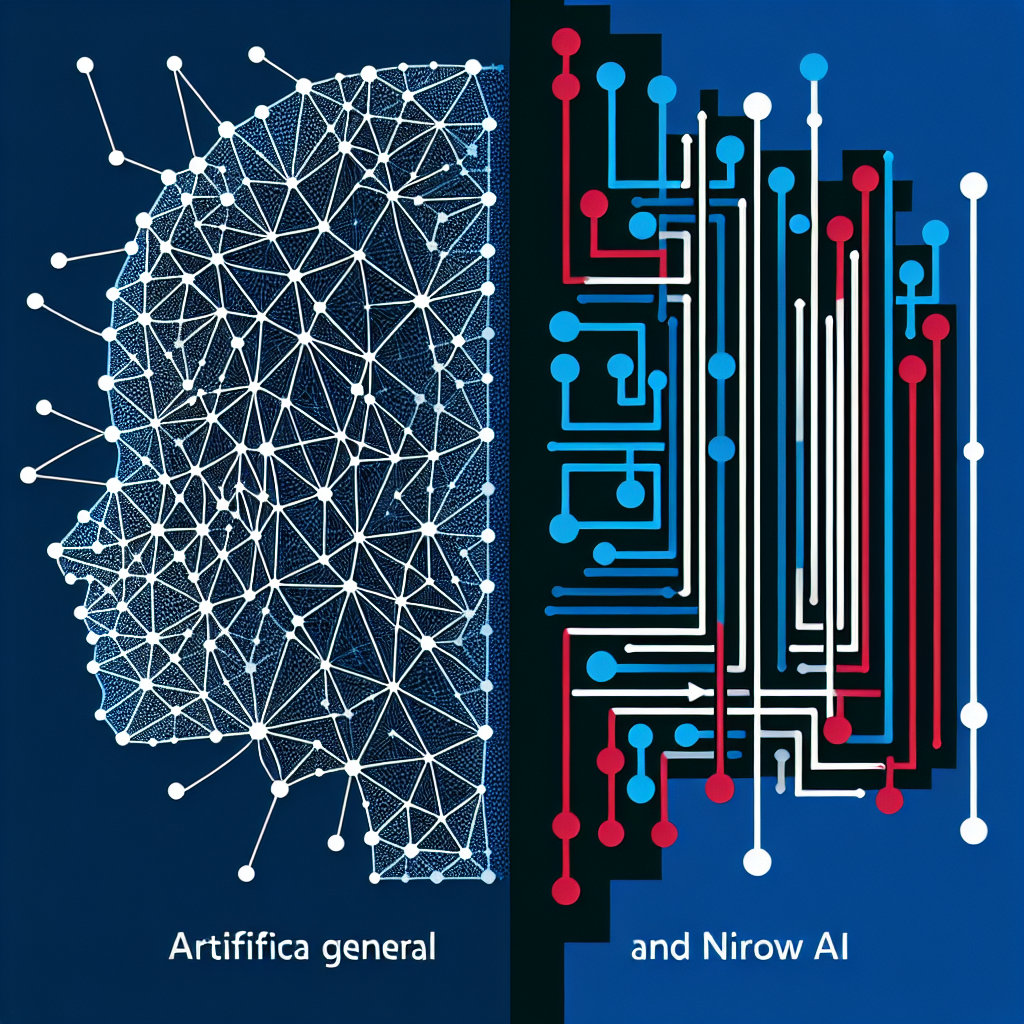Artificial Intelligence (AI) has become a prevalent topic in today’s technological landscape, with advancements being made in various fields such as healthcare, finance, and transportation. However, when discussing AI, it is important to differentiate between two main types: Artificial General Intelligence (AGI) and Narrow AI. Understanding the key differences between these two forms of AI is crucial in order to grasp the potential implications and capabilities of each.
AGI vs. Narrow AI: What’s the Difference?
Artificial General Intelligence (AGI) refers to AI that possesses human-like cognitive abilities, such as reasoning, problem-solving, and the ability to generalize knowledge across different domains. AGI aims to replicate human intelligence in machines, allowing them to perform a wide range of tasks and adapt to new situations without being explicitly programmed for them.
On the other hand, Narrow AI, also known as Weak AI, refers to AI that is designed for a specific task or set of tasks. Narrow AI is highly specialized and excels at performing a single task or a narrow range of tasks, such as image recognition, language translation, or playing chess. While Narrow AI may outperform humans in specific tasks, it lacks the general cognitive abilities of AGI and is unable to transfer its knowledge to other domains.
Key Differences Between AGI and Narrow AI
1. Scope of Intelligence:
The primary difference between AGI and Narrow AI lies in their scope of intelligence. AGI aims to replicate the broad range of cognitive abilities found in humans, allowing machines to think, learn, and adapt to new situations like humans do. In contrast, Narrow AI is limited to performing specific tasks and lacks the ability to generalize its knowledge beyond its designated domain.
2. Flexibility:
AGI is characterized by its flexibility and adaptability, allowing machines to apply their intelligence to a wide range of tasks and scenarios. AGI can learn from experience, reason, and make decisions in complex, uncertain environments. In contrast, Narrow AI is rigid and specialized, excelling at a particular task but unable to transfer its knowledge to other domains or adapt to new situations.
3. Self-awareness:
AGI is designed to possess self-awareness and consciousness, enabling machines to understand their own existence, emotions, and intentions. AGI can reflect on its actions, make moral judgments, and exhibit human-like qualities such as empathy and creativity. In contrast, Narrow AI lacks self-awareness and operates based on predefined rules and algorithms, without a true understanding of its actions or intentions.
4. Generalization:
AGI has the ability to generalize its knowledge across different domains, applying its intelligence to new tasks and scenarios that it has not been explicitly trained for. AGI can learn from one domain and transfer its knowledge to another, adapting its skills and capabilities to new challenges. In contrast, Narrow AI is limited to the specific tasks it has been designed for and lacks the ability to generalize its knowledge beyond its designated domain.
5. Complexity:
AGI is a complex and ambitious goal in the field of AI, requiring advancements in various subfields such as machine learning, natural language processing, and robotics. AGI aims to replicate the full spectrum of human intelligence, encompassing sensory perception, reasoning, problem-solving, and social interaction. In contrast, Narrow AI is more focused and achievable, with specific applications and use cases that can be implemented in the real world.
Frequently Asked Questions (FAQs)
Q: Can Narrow AI eventually evolve into AGI?
A: While Narrow AI can outperform humans in specific tasks, it lacks the general cognitive abilities and flexibility of AGI. The transition from Narrow AI to AGI would require significant advancements in AI research and technology, as well as a fundamental shift in the way machines are designed and programmed.
Q: What are some examples of Narrow AI applications?
A: Some examples of Narrow AI applications include virtual personal assistants (such as Siri and Alexa), recommendation systems (such as Netflix and Amazon), autonomous vehicles, and facial recognition technology. Narrow AI is prevalent in various industries and is used for a wide range of tasks, from customer service to healthcare diagnostics.
Q: What are the ethical implications of AGI?
A: The development of AGI raises ethical concerns related to autonomy, accountability, and transparency. AGI machines with human-like intelligence and decision-making capabilities could have a significant impact on society, raising questions about privacy, security, and the potential for misuse. It is essential to consider the ethical implications of AGI and establish guidelines and regulations to ensure its responsible development and deployment.
Q: How close are we to achieving AGI?
A: The development of AGI is a complex and ambitious goal that requires advancements in various fields of AI research, such as machine learning, natural language processing, and cognitive science. While progress has been made in AI technologies, achieving AGI remains a long-term objective that will require continued research, innovation, and collaboration across disciplines.
In conclusion, understanding the key differences between AGI and Narrow AI is essential in order to grasp the potential implications and capabilities of each form of AI. While AGI aims to replicate human-like cognitive abilities and generalize knowledge across different domains, Narrow AI is specialized and excels at performing specific tasks. As AI technologies continue to advance, it is important to consider the ethical implications and societal impact of AGI and Narrow AI, and to ensure their responsible development and deployment.

